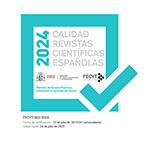Zoe Zenghelis and the graphic representation of the tourist project
Abstract
Rem Koolhaas closes Delirious New York (1978) with an appendix developed together with the rest of the members of Office for Metropolitan Architecture (OMA). It includes the projects for Sphynx Hotel, a compact and tall building occupying two blocks between Broadway and Seventh Avenue, and Welfare Palace Hotel, a conglomeration of towers close to the limit of Roosevelt Island.
In 1981, the team formed by Elia Zenghelis, Ron Steiner, Elia Veneris y Zoe Zenghelis, as the Greek section of OMA, presents the project for the Therma tourist complex in the bay of Gera (Lesvos, Greece). It is formed by pure geometric volumes distributed all around an olive grove next to the sea.
In both cases, Zoe Zenghelis is in charge of the graphic representation and she creates very powerful images. They are usually bird’s eye views characterised by a peculiar use of colour. They move from a kind of aggressive colouring, which lies on the first ones in consonance with the provocative text, to the soft and poetical hues, which recall the calm of the Mediterranean coastline.
Beginning with the analysis of the two projects and their paintings, the paper explores how Zoe Zenghelis deals with the works made for OMA as well as her more personal ones in the context of Postmodern theory. Furthermore, it inspects her role as the author of the depictions and, so, as the responsible for the public presentation of the projects and the creation of an iconic image, connected to her own works, claiming the importance of women in the architecture office.
Downloads
Article download
License
In order to support the global exchange of knowledge, the journal Investigaciones Feministas is allowing unrestricted access to its content as from its publication in this electronic edition, and as such it is an open-access journal. The originals published in this journal are the property of the Complutense University of Madrid and any reproduction thereof in full or in part must cite the source. All content is distributed under a Creative Commons Attribution 4.0 use and distribution licence (CC BY 4.0). This circumstance must be expressly stated in these terms where necessary. You can view the summary and the complete legal text of the licence.











